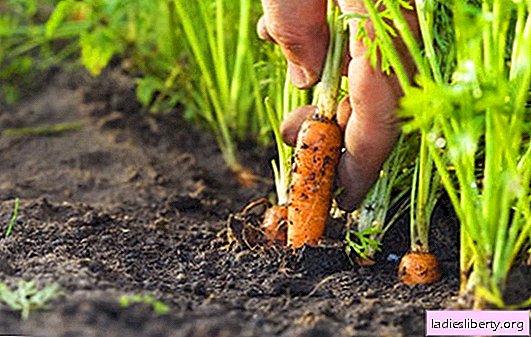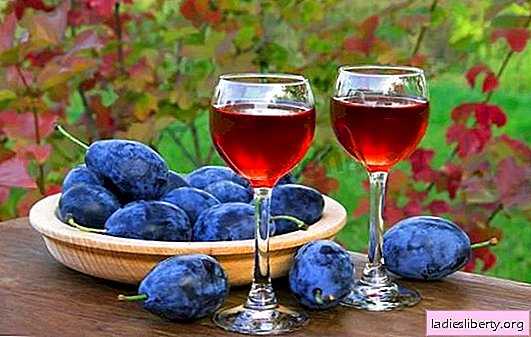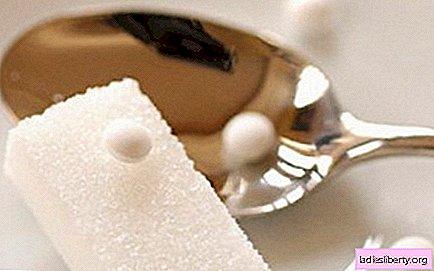
Nasturtium - general description
In city parks on flowerbeds and flower beds, and in private gardens and home gardens, you can often find a very decorative and bright plant with large orange, yellow and pink flowers. it nasturtium (lat. Tropaeolum), otherwise referred to as capuchin. It is an annual plant with a bare branchy and slightly curly stem. Its length, depending on the type of plant, can reach from 30 to 200 cm.
The leaves of nasturtium grow on long petioles; they themselves are lobed, thyroid or palmate. The flowers are irregular in shape; the calyx has five petals and a spur at the base. The fruit consists of three single-seed wrinkled lobes. Flowering begins in June and lasts through August, at which time nasturtium attracts many bees, as it is a good honey plant. The fruits appear in August, they have a taste reminiscent of the taste of capers, are eaten in the form of spices.
Nasturtium - types and places of growth
The nasturtium plant was originally widespread in the countries of South America, then it came to Europe and Russia and, thanks to its relative unpretentiousness, took root here perfectly. In total, scientists count about 25 species of this plant, including May nasturtium (Tropaeolum majus), beautiful nasturtium (Tropaeolum speciosum), foreign nasturtium (Tropaeolum peregrinum), multifolia nasturtium (Tropaeolum polyphyllum), etc.
It grows on moderately moist soils with good drainage, does not tolerate fresh organic fertilizers and excess moisture. Two types of nasturtium are widespread in Russia - dwarf (low bush), the shoots of which reach only 30 cm in length, and long-shoot with shoots 1.5-2.0 meters long.
Nasturtium - healing properties
Nasturtium is widely used as a medicinal plant. It contains a very large amount of ascorbic acid (vitamin C). According to the content of this useful substance, it can be compared with blackcurrant berries or pepper fruits, and compared to leaf lettuce vitamin C in nasturtium is 10 times more. It also contains provitamin A (carotene), sulfur, potassium, iodine and phosphorus. Drugs based on nasturtium have a diuretic, anti-zingotic and anti-inflammatory property. They improve metabolism and help with anemia.
They are also recommended for bronchitis, tonsillitis and tumors. Studies were conducted on individual fractions of nasturtium essential oil, during which the ability of one of them (tropeolin) to enhance blood flow through the coronary arteries was revealed. This makes it possible to assume that in the near future nasturtium preparations can be used in the treatment of coronary insufficiency and atherosclerosis.
Nasturtium - dosage forms
In the medicinal product, all parts of the plant are used - the roots, leaves, stems and flowers of nasturtium. Leaves are used as an anti-zingotic agent for influenza, colds and diseases of the upper respiratory tract and lungs. Dried leaves have the ability to relieve depression, irritability and anxiety. They are used to make infusions. A decoction of leaves, roots and flowers of nasturtium is an effective diuretic, successfully used for diseases of the kidneys and urinary tract.
Nasturtium - recipes
Infusion of nasturtium leaves is prepared from 1 tbsp. tablespoons of dried crushed raw materials, filled with 200 ml of boiling water. It is insisted for 30 minutes, filtered and taken in 1/3 cup 3 times a day. Accepted for colds, lung diseases.
A wine infusion of nasturtium leaves is prepared from a 1 liter jar tightly filled with fresh leaves of nasturtium, filled with dry white wine. The drug is infused for 14 days in a dark place at room temperature, and then filtered and taken 1 teaspoon 3 times a day before meals as a restorative.
A decoction of all parts of plants is made from 1 tbsp. tablespoons of raw materials, filled with 500 ml of boiling water. The broth is boiled in a water bath for 15 minutes, insisted 45 minutes, filtered. Reception - 200-250 ml 3 times a day. Used for diseases of the urinary system.
Alcohol tincture of nasturtium is prepared from 1.5 tbsp. tablespoons of raw materials (dried, crushed leaves and buds), drenched with 200 ml of vodka. Tincture is aged 14 days in a dark place with periodic shaking. Admission - 25 drops 3 times a day for bronchitis.
Nasturtium - contraindications
Drugs based on nasturtium are contraindicated for people suffering from gastritis or a stomach ulcer. In other cases, their administration should be carried out under the supervision of a physician.
Comments











